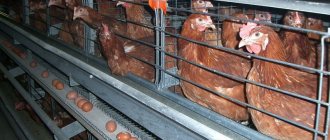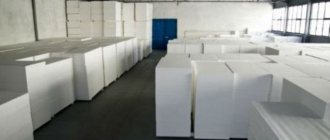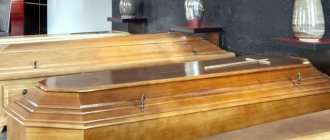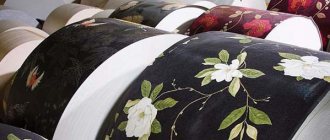Recycling wood and other waste is a widespread and profitable environmental business these days. In this regard, in pursuit of complete recycling of agricultural waste and all kinds of wood products, people are coming up with more and more modernized and improved ways of producing recyclable materials and useful items from them. One of these types was the production of European firewood.
Eurofirewood is environmentally friendly fuel briquettes, most often made from sawdust, chips or small shavings, which are waste from wood processing. They can also be made from plant residues from the agricultural industry, coal dust and other types of industrial waste.
In European countries, such briquettes have long been in great demand, as they are widely used both by the population for heating and by large enterprises in various plants and factories as an inexpensive, environmentally friendly fuel. In Russia, the popularity of using firewood from plant waste is only increasing, and at the same time, fuel products are beginning to be actively exported abroad.
The production of fuel briquettes is a modernized technological process. At high pressure and a certain temperature, the particles of raw materials are glued together during physical and chemical reactions, thus forming compressed rectangular or cylindrical bars, or multifaceted briquettes. The resulting briquettes are in no way inferior to ordinary firewood from deciduous or coniferous trees in terms of heat transfer.
Production stages
The process of making biofuels is simple. All work is divided into several stages:
- First, the raw material components, free of dirt, are crushed using a chipping unit.
- Then the raw materials are placed in the dryer. The output humidity range should be from 6 to 12%. This is an important stage of production, since good drying affects the quality of the finished product.
- The crushed and dried material is pressed under high pressure and at high temperature.
- At the final stage, briquettes of a certain shape are formed. They cool down, gain strength and are transported to storage facilities.
The technology for producing European firewood from sawdust does not involve adding any components to the mixture. During pressing at elevated temperatures, a chemical reaction occurs. The particles of the substance are glued together by lignin, which is contained in the plant cells of wood.
https://youtube.com/watch?v=P1WkqM98H4w
Production of fuel briquettes and pellets
Format
Briquettes vary in format and density. It depends on the equipment on which they are pressed. Depending on the die - output nozzle, there are 3 types.
- Piney-kei - have a four-sided or hexagonal format with a longitudinal round hole in the middle. The hole is provided to improve combustion qualities. This type is the leader in density 1.4 g/cm³.
- Nestro - has a solid round cross-section. Some manufacturers specially trim the edge to make it easier to lay out in the fireplace and prevent European wood from rolling off. In terms of density, Nestro comes in second place with 1.15 g/cm³.
- Ruf is a rectangular parallelepiped. The format is convenient for firing solid fuel boilers and stoves. Density ‒ 0.8 g/cm³.
All 3 types do not differ in quality, composition and mass calorific value. Their only drawback is the price, although if compared with firewood not in mass equivalent, but in thermal equivalent, it turns out the same.
Pressing equipment for the production of fuel briquettes
To produce straw briquettes, you can use different types of presses:
- Mechanical impact briquetting press. The most popular type of straw briquetting press. His trailer is quite simple and reliable. The straw mass is kneaded layer by layer into the shape of a dense cylinder, which gradually moves along the stabilizer. At its end, the cylinder breaks off with a special knife or under its own weight. Such briquettes usually come in different lengths. They retain all the advantages of the ecological solid fuel of straw briquettes, but lose their aesthetic visual properties.
Hydraulic press for briquetting. Briquettes produced by this group of pressing machines have a cylindrical or RUF shape (a patented shape that gives additional properties to the briquette: uniform burning with greater heat transfer, increased resistance to moisture, etc.). Due to much greater pressure, briquettes of this type are more compact and, as a rule, do not crumble. They are the optimal fuel for fireplaces, but nothing prevents their use in any other heating devices.
Screw press for extrusive (continuous) briquetting. This type of press is distinguished by its special productivity and good quality of compression of the straw mass. In fact, these presses form pallets - these are thin cylindrical briquettes of the highest quality (pencil thick). The disadvantage of screw presses is higher operating requirements and increased wear of working units. When briquetting, chopped straw is subjected to high pressure, obtained by pressing it with an auger in a sleeve (similar to the principle of a meat grinder). But the final shape is given by a special bushing at the end of the screw. In this case, the end surface of the briquette is sealed with an electric heater. It helps release more water vapor from the already dry material. This additional process also makes it possible to increase the moisture resistance of the finished product.
Briquette manufacturing technology
The raw material for the production of fuel briquettes is wood processing waste - sawdust, the main supplier of which is the sawmill. The type of wood does not matter, but the moisture content of the raw materials should be no more than 12%, size - up to 6 mm. Rotten wood should not be more than 5% of the total mass of waste. First, sawdust is sorted to eliminate large pieces of wood, after which they are fed into a crusher, and then to regrinding, where they are given the desired size.
Crushed sawdust is fed into the heat generator and mixed with flue gases, then to the drying drum. From there, the briquette mass enters a cyclone, in which dry waste is separated from gases and settles to the bottom. Next, the material enters the conveyor and presses or extruders to create the necessary pressure. Sawdust briquettes for heating are made in two ways:
- creation using a hydraulic press;
- extrusion method.
The extrusion method consists in the fact that the raw material is poured into the receiving hopper of the device and goes into a tapering working channel, where it is strongly compressed using a press. The result is firewood made from sawdust in the shape of a hexagon. After undergoing heat treatment, they are cut to one size with a special knife.
With both technologies, Euro-firewood is produced by strongly squeezing wood waste, as a result of which lignin, a binding substance, is released from it. Due to strong compression, the raw material heats up , resulting in the formation of rectangular logs. Due to the high pressure, the briquette heats up so much that it chars a little. In some cases, after the press, the blanks are sent to the furnace for even greater heat treatment.
Hydraulic and screw presses facilitate the release of lignin, but maintaining such units is expensive, so they are used only in industrial production.
Additional features
The choice and configuration of equipment for the production of briquettes depends on the tasks and production volumes.
Technical equipment may additionally include:
- Movable floor with automatic supply of raw materials to the conveyor for further processing.
- Battery cyclone, where dry sawdust is separated from the exhaust gases obtained during the combustion process of the drying drum.
- Screw conveyor for moving raw materials from one device to another.
- Briquetting area with an automatic saw for cutting briquettes and a container for supplying products for packaging.
- Packaging machines that allow the formation of briquettes into shrink film.
- Device for tying pallets.
Many practical people involved in housekeeping make products with their own hands on homemade manual machines. In their opinion, the main thing in the equipment is the mechanism that creates pressure and the element that allows you to give the briquettes a certain shape.
Related video: DIY fuel briquettes
Selection of questions
- Mikhail, Lipetsk — What discs should I use for cutting metal?
- Ivan, Moscow - What is the GOST for rolled sheet steel?
- Maxim, Tver - Which racks for storing rolled metal products are better?
- Vladimir, Novosibirsk — What does ultrasonic processing of metals without the use of abrasives mean?
- Valery, Moscow - How to forge a knife from a bearing with your own hands?
- Stanislav, Voronezh — What equipment is used for the production of galvanized steel air ducts?
Raw materials
The raw materials used are mainly wood, sunflower husks, rice and buckwheat husks. Additives of peat, coal dust, straw and tyrsa can also be used. The composition of the briquette determines such qualities as calorific value, ash content and soot emission.
Based on these qualities, briquettes can be divided according to their intended purpose. For fireplaces, fuel with the lowest ash content and soot emission is used so as not to clog the chimney. Solid fuel boilers are less “capricious”, so the balance of qualities shifts in favor of calorific value. For industrial furnaces, the main parameter is the release of temperature, and other qualities fade into the background. Briquettes can also be used for cooking over an open fire, and here the purity of the product is important. For these purposes, Euro-firewood made from deciduous wood is used.
In order to obtain briquettes with the given parameters, technologists take into account the qualities of each element separately and create the necessary proportions.
- Wood – calorie content 5043 kcal/kg, ash content 0.5-2.5%
- Sunflower husk – 5151 kcal/kg, ash content 2.9-3.6%
- Straw – 4740 kcal/kg, ash content 4.8-7.3%
- Tyrsa – 4400 kcal/kg, ash content 0.7%
- Rice and buckwheat husks – 3458 kcal/kg, ash content 20%
Additives of peat and coal dust are used only for industrial furnaces.
Sales market
The demand for wood briquettes is constantly growing. This is mainly due to their economical consumption and ease of transportation and storage. In Europe, this type of fuel has been in demand for quite a long time. In Russia, this material appeared relatively recently.
However, the market has already actively begun to take shape, and the fuel business in this area has begun to gain momentum. Therefore, there is an opportunity to take our place in this matter. The good thing is that sources of raw materials for the manufacture of these products can be found in abundance in almost any area of our homeland.
Dachas, country houses, recreation centers - consumers of fuel briquettes - are heated by boilers or fireplaces. Basically, these objects do not have heating communications, or they are significantly outdated and in a worn-out condition. Today you can even buy fuel pellets and European firewood in supermarkets.
Various organizations may well become a separate branch of sales of these products: agricultural plants, poultry farms. Almost every enterprise that has boiler rooms runs on solid fuel. It will not be difficult to interest these organizations in purchasing this material. You just need to calculate the benefits of the deal. This includes improving the environmental situation in the area where the enterprise is located and reducing the costs of transportation and storage. Basically, all current boiler houses operating on solid fuels can operate on the specified material.
Staff
The amount of labor you hire will also depend on the volume of your briquette production line. The standard three-shift operation of the enterprise is provided by fourteen employees. Among them, those working in the positions of director, storekeeper and accountant work on a five-day week schedule. The rest are 4 people in three shifts. It makes sense to combine a storekeeper and an accountant.











